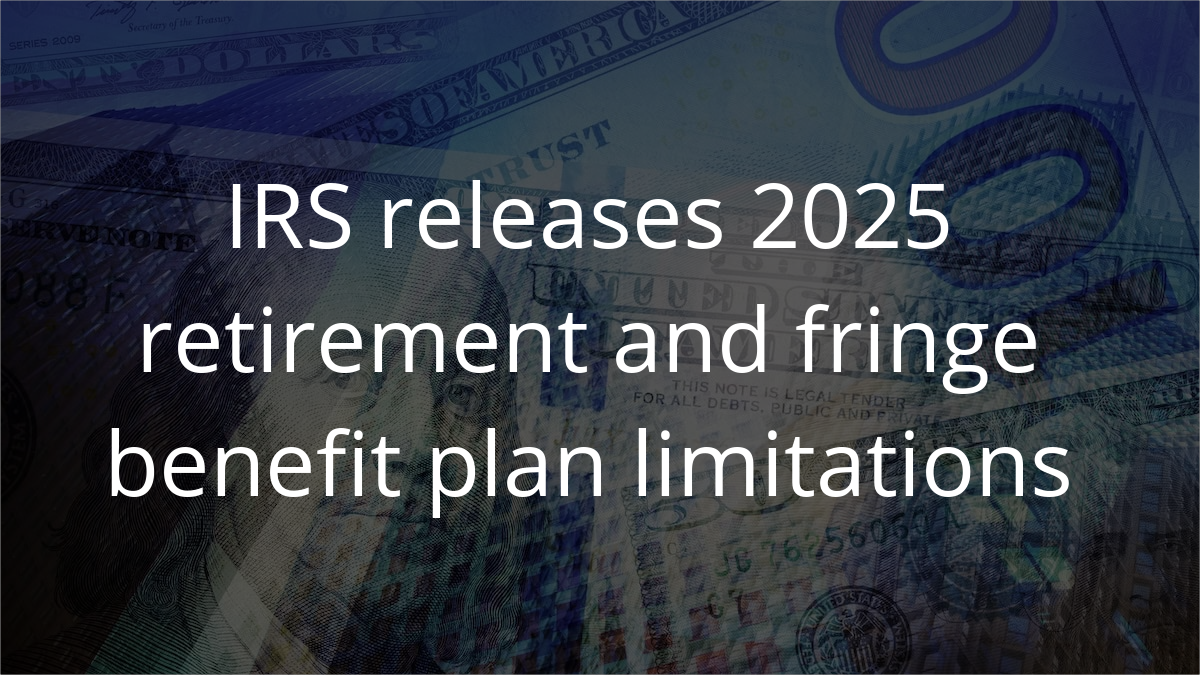ARTICLE | June 20, 2021
In many nonprofit organizations, the traditional budget process is a tedious annual ritual where organizational goals are created in one silo, number crunching is done in another and staff-level input is generally restricted to a given operational unit. For those reasons, it’s no surprise that most annual budgets become obsolete well before target dates are ever reached.
If your current planning, budgeting and forecasting activities are not adding clear value to your organization, there is a better way. Nonprofit leaders who rethink conventional assumptions and embrace next-generation processes and technologies can improve budget planning and performance against strategic objectives.
Best practices for budgeting and planning
To help derive maximum value in each budgeting and planning cycle, consider tapping the following six best practices:
- Leveraging technology. Excel spreadsheets have been a budget planning workhorse for many years. However, a new generation of software tools are not only more nimble and scalable, but can also automate key processes, provide business intelligence and deliver a unified solution for budgeting, forecasting and reporting.
- Increasing frequency. While the annual budget plan has long been a cornerstone of nonprofit planning, this approach is ill-suited for market volatility, or when sudden course corrections are needed to navigate budget opportunities or constraints. A better way to align organizational strategy and operations is to use rolling forecasts, which force operating units to update business projections each month. This increased frequency provides a more accurate picture of current conditions and allows for more nimble management of staff time and financial resources.
- Using driver-based planning. This step begins by researching key external market drivers, such as industry trend reports, peer organization data or pertinent demographic information. When the external fact-finding is complete, narrow the findings to those drivers that add direct value to organizational growth, are directly related to improving the accuracy of budget forecasts and are crucial to meeting financial goals. When done consistently, this practice can help provide leaders with confidence that budget forecasts are formulated with both external and internal key performance indicators in mind.
- Expanding participation and collaboration. While executives often set budgets, the process isn’t always collaborative. This is a lost opportunity. Executives should communicate the organization’s strategy and identify the contributions or roles expected of each individual business area. Once this strategic alignment has been defined, business unit leaders and staff will be in an excellent position to provide the best projections, since they have intimate knowledge of their specific areas and how they can best align with organizational strategy. So in an effective budget approval process, executives still decide the organization’s strategy, but hands-on unit staff provide the needed forecast data. This, in turn, improves management’s ability to implement strategic plans.
- Ensuring process management. Effective process management requires buy-in from all core stakeholders, since their active participation can make or break success. That’s why it’s important to seek input from business units at the beginning of every budget cycle, and regularly involve them as part of a continuous improvement process.
- Utilizing real-time reporting with drill-down capabilities. Nonprofit leaders are consistently faced with crucial decisions about running their organization and crave the right data to help guide those decisions. However, too many forecasting and budgeting processes still rely on Excel pivot tables—populated with stale data and very limited (if any) supporting detail. Even worse, some teams use data from different systems that may have conflicting information, generating more confusion rather than higher certainty. This is why nonprofits must continue to mature their practices and tools to deliver real-time reporting with drill-down capabilities. A suitably structured chart of accounts, standard processes and a modern financial system can become the foundation to sound budgeting and forecasting decisions as well as a more effective oversight capability.
Corporate performance management (CPM) tools
As noted, Excel spreadsheets have significant limitations and inherent issues when it comes to budgeting and planning. Today, a variety of corporate performance management providers serving the middle market offer tools that can help organizations convert data into actionable, fact-based information that can enhance organizational decision-making and strategic insight.
While CPM tools have clear advantages in budgeting, forecasting and reporting, they also deliver added benefits such as the ability to better plan for personnel, capital expenditures, revenue, grants, programs or other budget centers, as well as to better manage consolidations, financial reporting, financial analysis, dashboards and scorecards, and process workflows.
This article was originally published on Feb. 17, 2015 and has been updated.
Do you have questions or want to talk?
Call us at (800) 232-9547 or fill out the form below and we’ll contact you to discuss your specific situation.
This article was written by RSM US LLP and originally appeared on Jun 20, 2021.
2022 RSM US LLP. All rights reserved.
https://rsmus.com/insights/industries/nonprofit/6-ways-to-improve-nonprofit-budgeting-and-forecasting.html
RSM US Alliance provides its members with access to resources of RSM US LLP. RSM US Alliance member firms are separate and independent businesses and legal entities that are responsible for their own acts and omissions, and each are separate and independent from RSM US LLP. RSM US LLP is the U.S. member firm of RSM International, a global network of independent audit, tax, and consulting firms. Members of RSM US Alliance have access to RSM International resources through RSM US LLP but are not member firms of RSM International. Visit rsmus.com/aboutus for more information regarding RSM US LLP and RSM International. The RSM(tm) brandmark is used under license by RSM US LLP. RSM US Alliance products and services are proprietary to RSM US LLP.

Insero & Co. CPAs, LLP is a proud member of RSM US Alliance, a premier affiliation of independent accounting and consulting firms in the United States. RSM US Alliance provides our firm with access to resources of RSM US LLP, the leading provider of audit, tax and consulting services focused on the middle market. RSM US LLP is a licensed CPA firm and the U.S. member of RSM International, a global network of independent audit, tax and consulting firms with more than 43,000 people in over 120 countries.
Our membership in RSM US Alliance has elevated our capabilities in the marketplace, helping to differentiate our firm from the competition while allowing us to maintain our independence and entrepreneurial culture. We have access to a valuable peer network of like-sized firms as well as a broad range of tools, expertise, and technical resources.
For more information on how Insero & Co. CPAs can assist you, please call (800) 232-9547.




